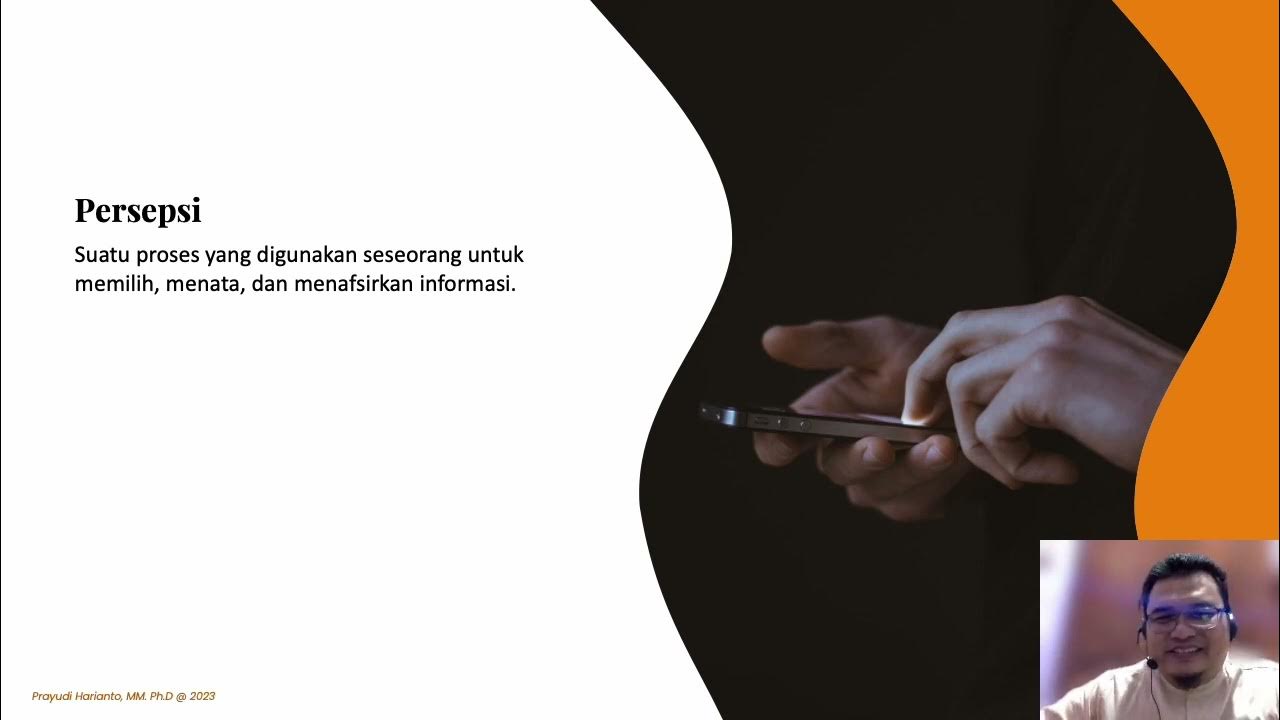Decision Making - Part 2
Summary
TLDRThis lecture on Organizational Behaviour focuses on decision-making, highlighting biases that affect both individual and group decisions. It reviews concepts like framing, prospect theory, representativeness, availability, anchoring, and overconfidence. The lecturer emphasizes how framing can alter perceptions of risk, while biases often lead to poor choices based on stereotypes or insufficient information. Additionally, the advantages and challenges of group decision-making are discussed, noting that collective decisions can foster commitment and synergy, though they may take longer to reach. Ultimately, the effectiveness of decision-making depends on the context and nature of the problems being addressed.
Takeaways
- 😀 Decision making is crucial in organizations, involving both individual and group processes.
- 😀 There are two main approaches to decision making: rational and intuitive, each with its advantages and limitations.
- 😀 Bounded rationality highlights the limitations of rational decision making due to cognitive constraints.
- 😀 Common barriers to effective decision making include not recognizing a problem and avoiding decision-making altogether.
- 😀 Decision-making biases can distort judgment; notable examples include framing, prospect theory, representativeness, and availability bias.
- 😀 Framing refers to how a problem is presented, significantly impacting decision outcomes.
- 😀 Prospect theory explains people's tendency to avoid decisions due to perceived risks outweighing potential benefits.
- 😀 Overconfidence bias can lead to overlooking crucial details and may result in poor decision outcomes.
- 😀 Group decision making can enhance commitment and participation, but individual decision making can be quicker in urgent situations.
- 😀 The effectiveness of decision making often depends on the context, the nature of the problem, and the team's ability to leverage individual strengths for collective success.
Q & A
What was discussed in the previous lecture on decision making?
-The previous lecture focused on the importance of decision making in organizations, the roles of individual and group decision making in organizational effectiveness, different approaches to decision making, and barriers to effective decision making, including the concept of bounded rationality.
What are the two main approaches to decision making mentioned in the lecture?
-The two main approaches to decision making are the rational approach and the intuitive approach.
What does the term 'bounded rationality' refer to?
-'Bounded rationality' refers to the limitations individuals face in decision making due to cognitive limitations, time constraints, and the complexity of the situation, which prevent them from making perfectly rational decisions.
What is framing bias, and how does it affect decision making?
-Framing bias occurs when the way a problem is presented influences the decisions made. The example given in the lecture illustrates how presenting a percentage versus a raw number can lead to different perceptions of risk.
How does prospect theory explain risk-averse behavior in decision making?
-Prospect theory suggests that individuals are more likely to avoid decisions that could lead to negative consequences because they perceive the potential losses as more significant than the potential gains.
What is the representativeness bias in decision making?
-Representativeness bias occurs when individuals evaluate information based on stereotypes or typical examples, which can lead to incorrect judgments about specific cases.
What is the availability bias, and how does it impact decision making?
-Availability bias happens when individuals assess the likelihood of an event based on how easily examples come to mind, which can distort their perception of actual probabilities.
What is the anchoring and adjustment bias?
-The anchoring and adjustment bias occurs when individuals rely too heavily on the first piece of information encountered (the anchor) when making decisions, leading to skewed judgments based on that initial reference.
How does overconfidence affect decision making?
-Overconfidence can lead individuals to be overly certain about their judgments and decisions, which may result in overlooking critical information or potential risks.
What are the advantages of group decision making compared to individual decision making?
-Group decision making promotes participation and commitment from members, creates a sense of fairness, and leverages collective wisdom, which can lead to more effective decisions. However, it can be slower than individual decision making, especially in emergencies.
Outlines

This section is available to paid users only. Please upgrade to access this part.
Upgrade NowMindmap

This section is available to paid users only. Please upgrade to access this part.
Upgrade NowKeywords

This section is available to paid users only. Please upgrade to access this part.
Upgrade NowHighlights

This section is available to paid users only. Please upgrade to access this part.
Upgrade NowTranscripts

This section is available to paid users only. Please upgrade to access this part.
Upgrade Now5.0 / 5 (0 votes)





